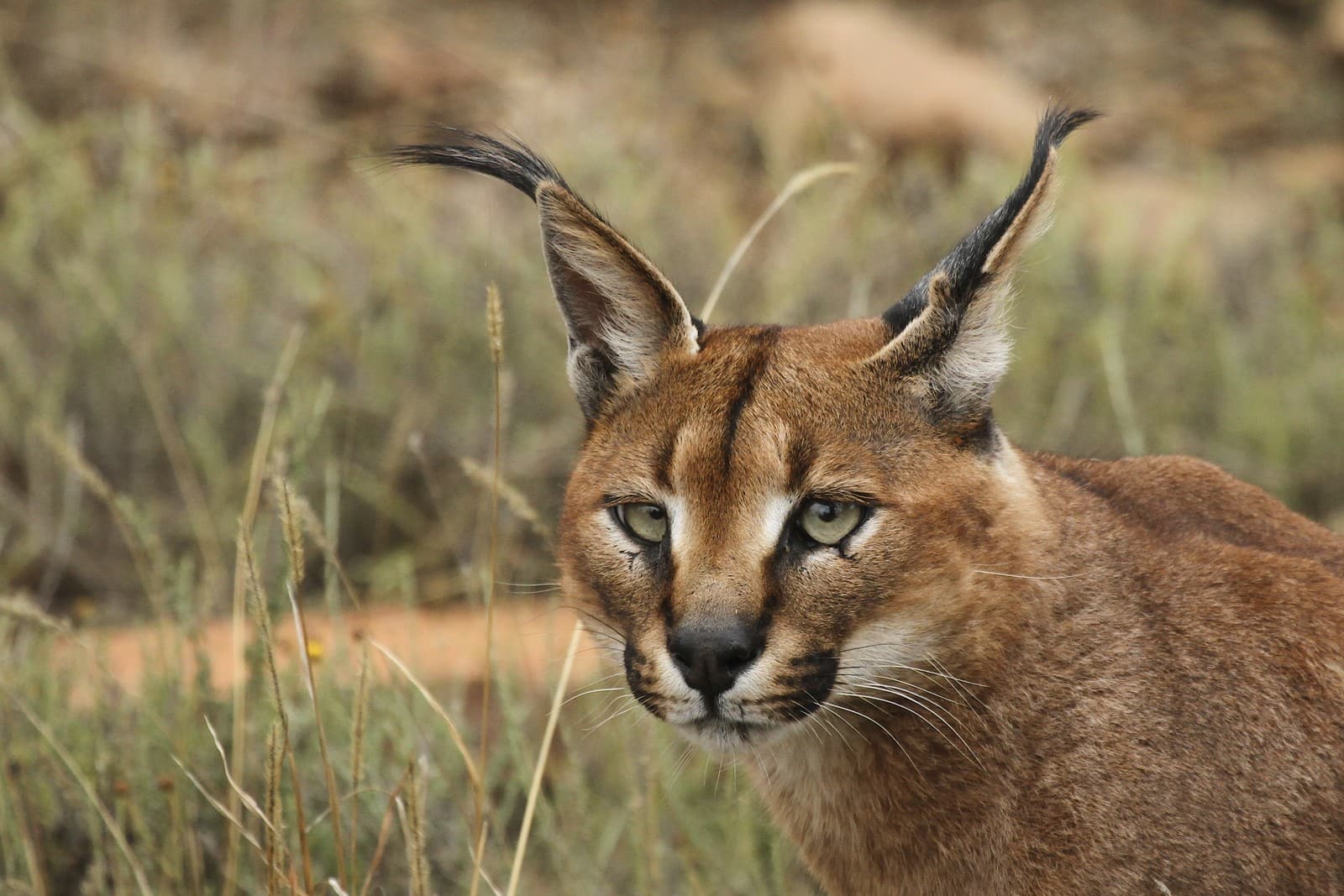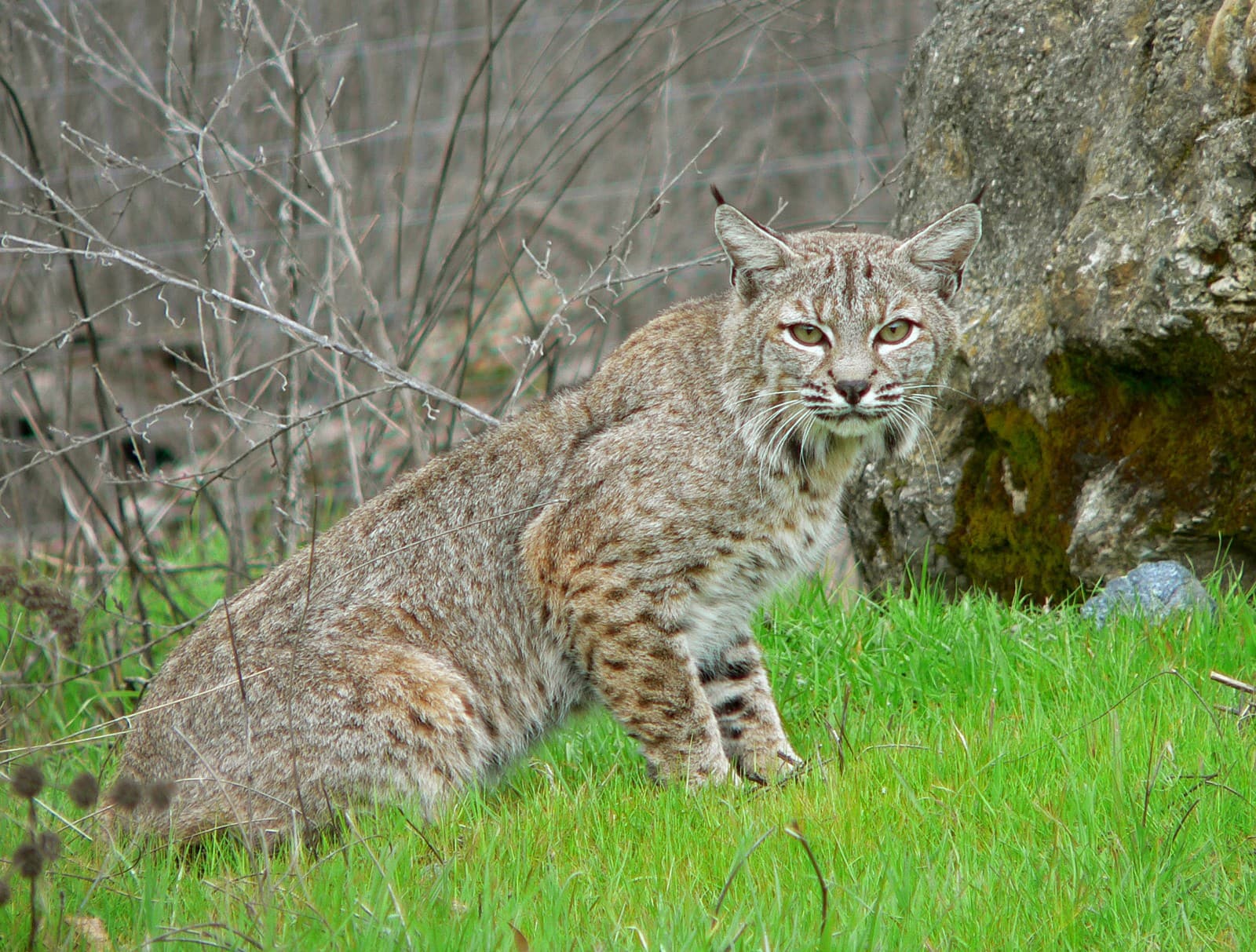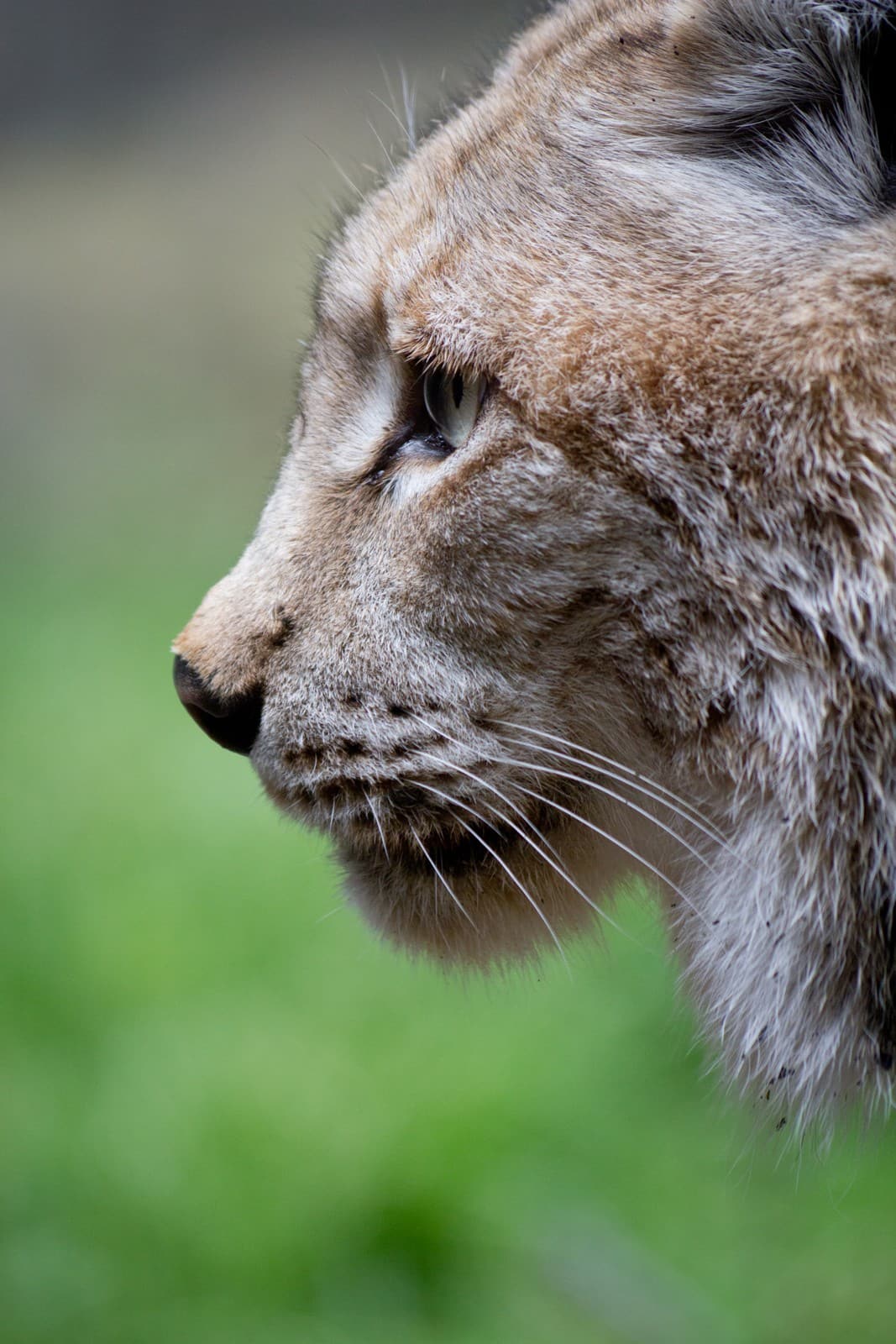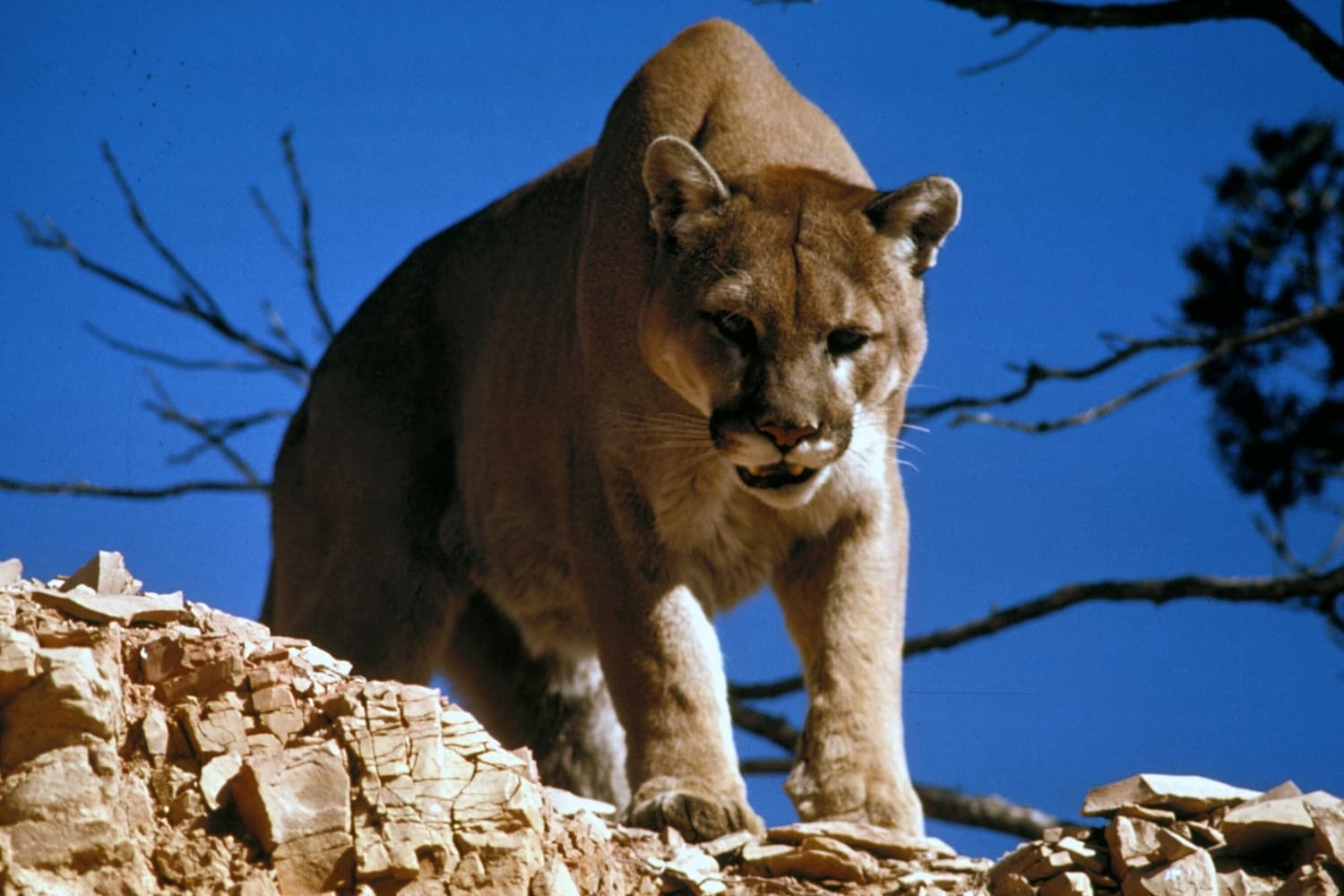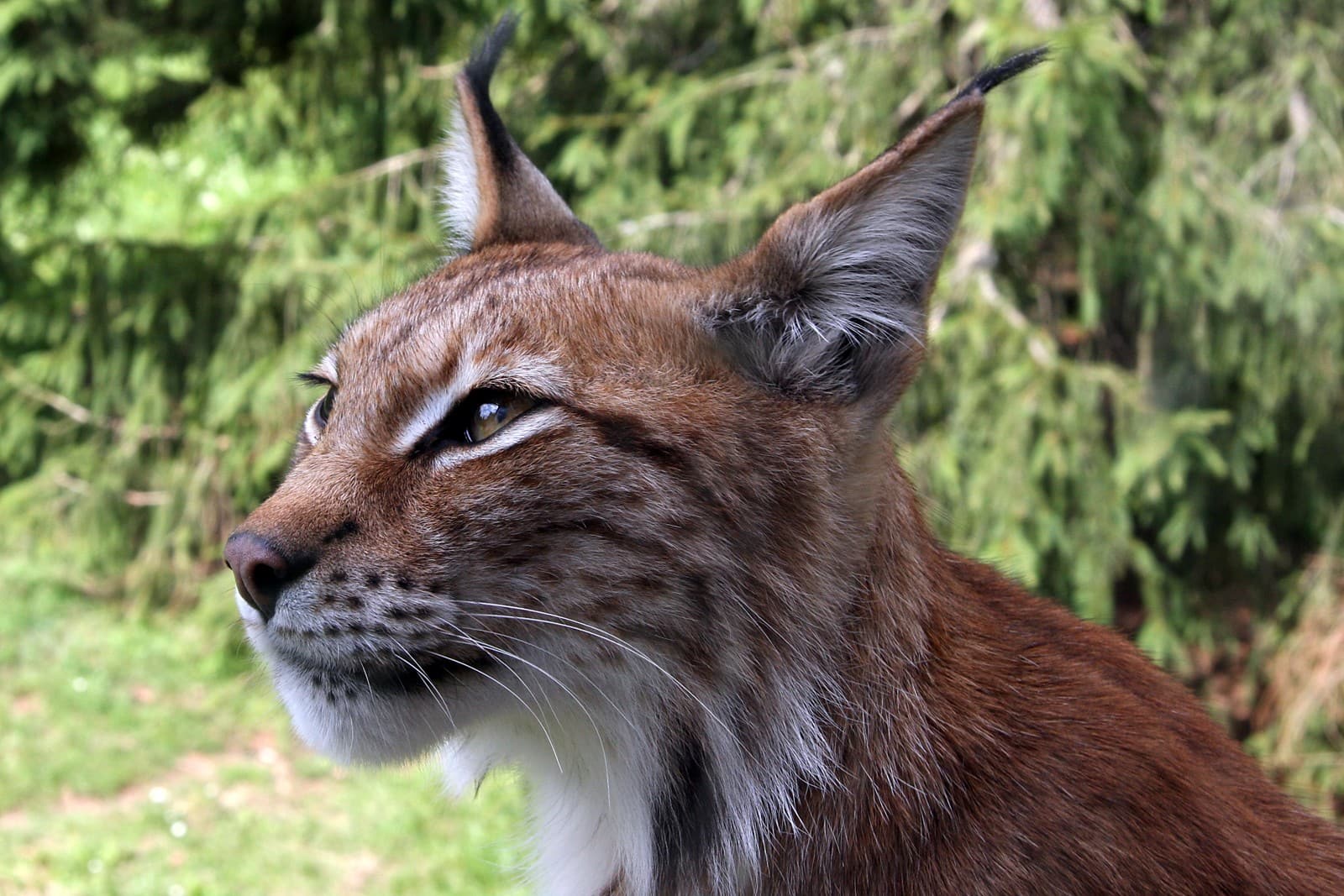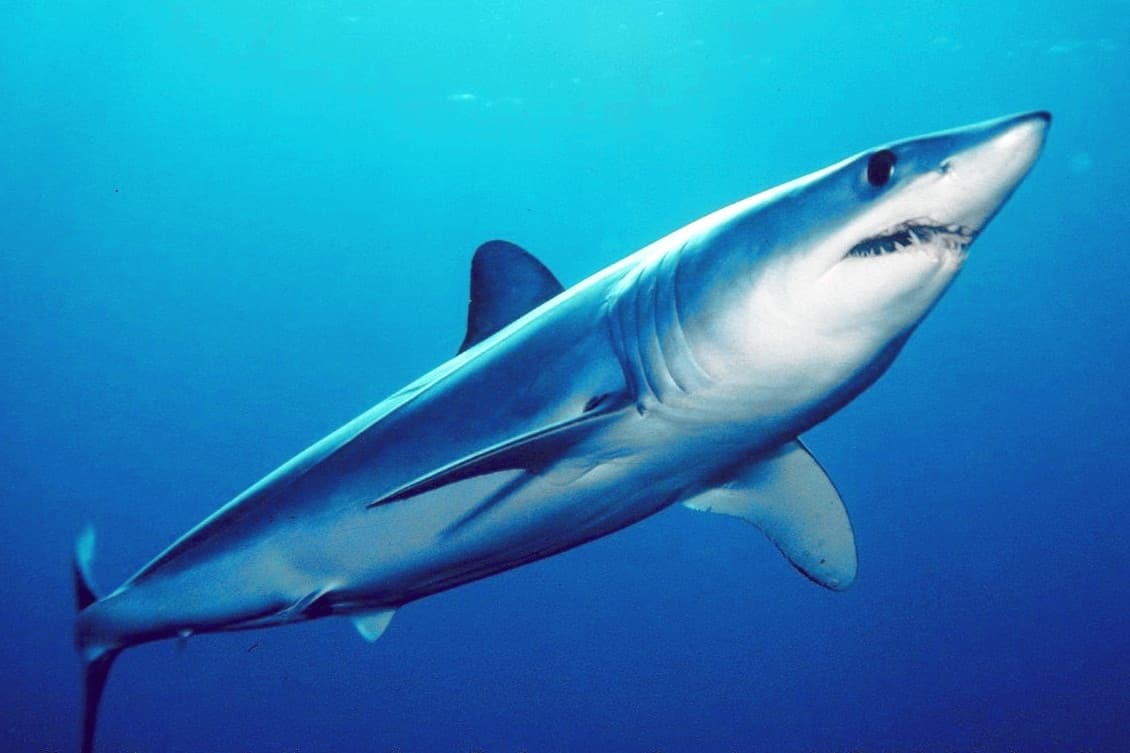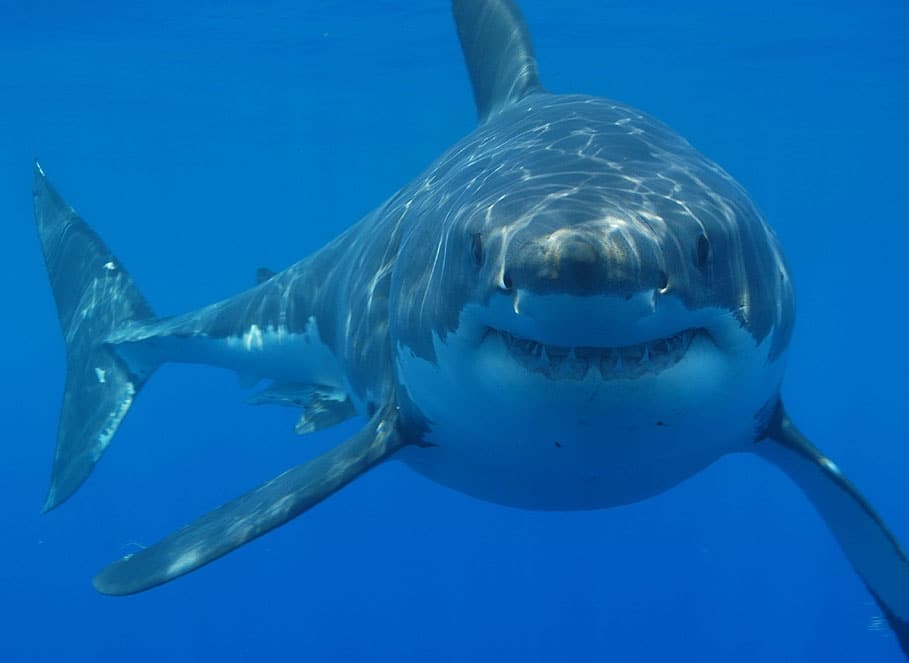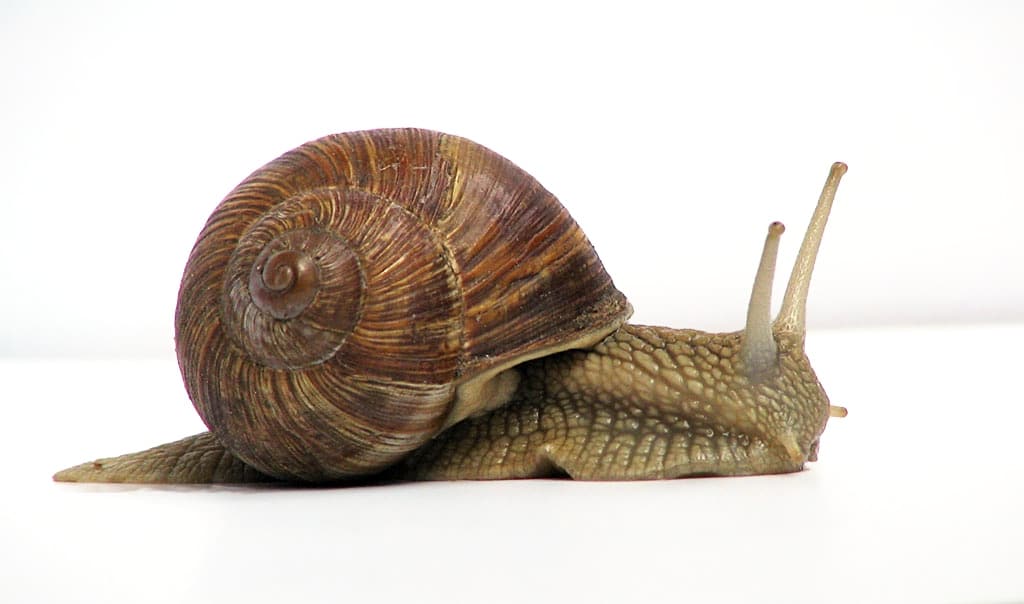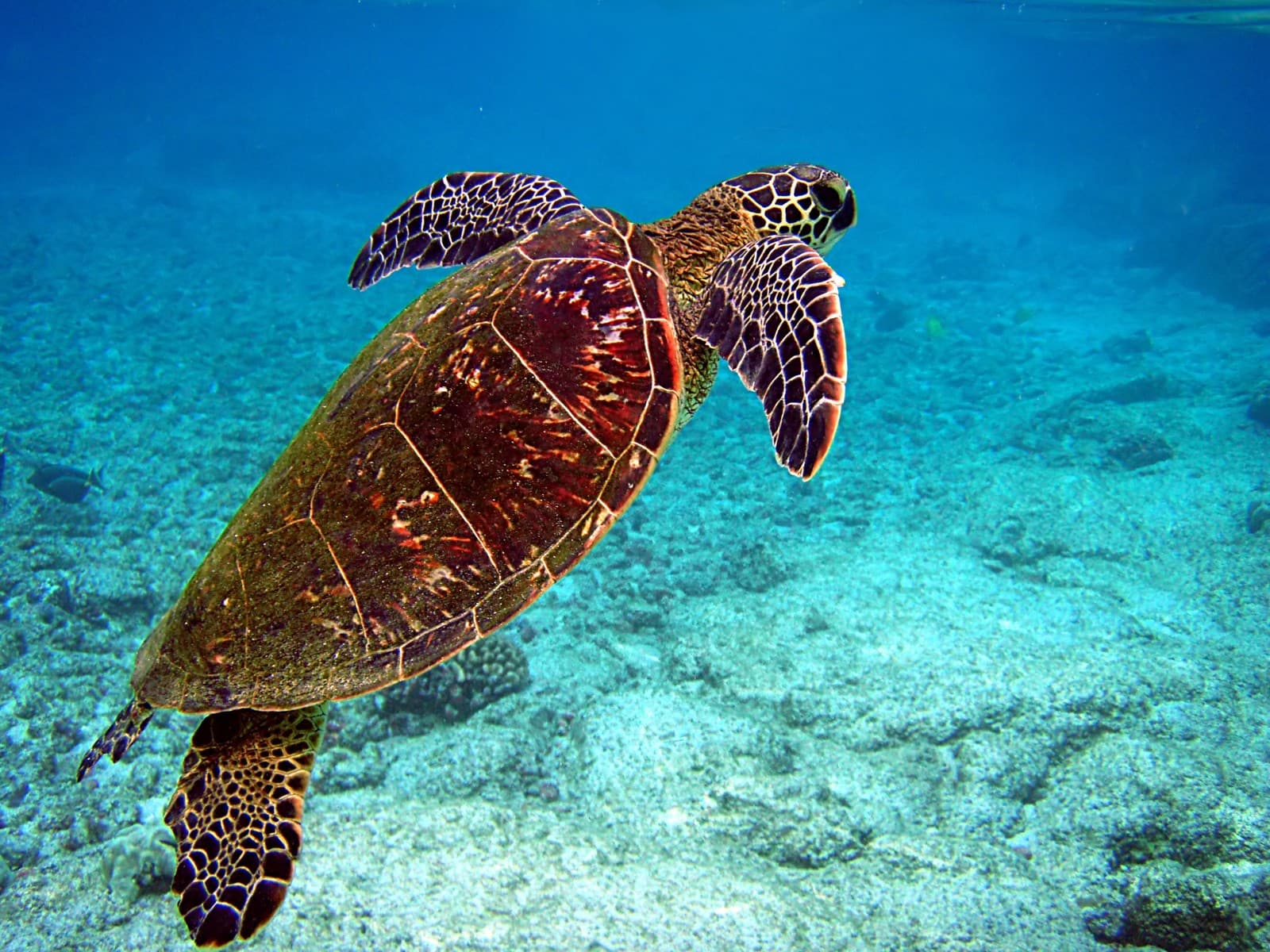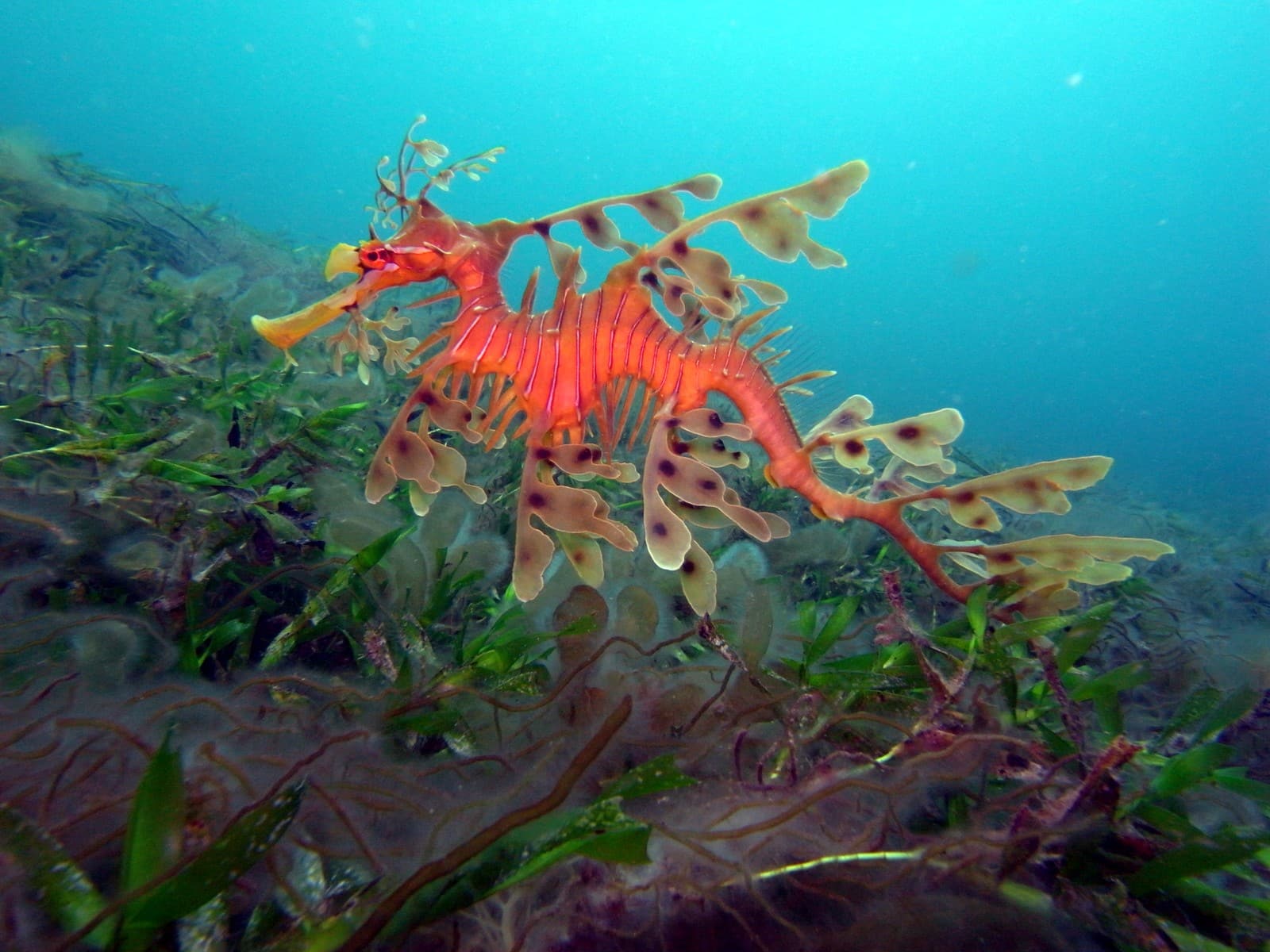Caracal vs Lynx: A Complete Comparison
While both caracals and lynx belong to the wild cat family, these remarkable predators have evolved distinct characteristics suited to their different habitats. The caracal, weighing 25-40 pounds (11-18 kg), thrives in Africa’s arid regions, while the larger Eurasian lynx, reaching up to 65 pounds (29 kg), dominates northern forests. Their most striking shared feature is their distinctive ear tufts, though caracals sport notably longer black tufts compared to the lynx’s shorter ones.
These medium-sized wildcats showcase fascinating adaptations that reflect their diverse hunting environments. The caracal’s sleek build and extraordinary jumping ability - reaching heights of up to 10 feet (3 meters) - contrasts with the lynx’s stockier frame and snowshoe-like paws designed for northern winters.

The caracal, often called the desert lynx, showcases its iconic black ear tufts that can reach up to 1.75 inches (4.5 cm) in length. These tufts serve as visual signals to other caracals and help with communication during hunting and breeding seasons.
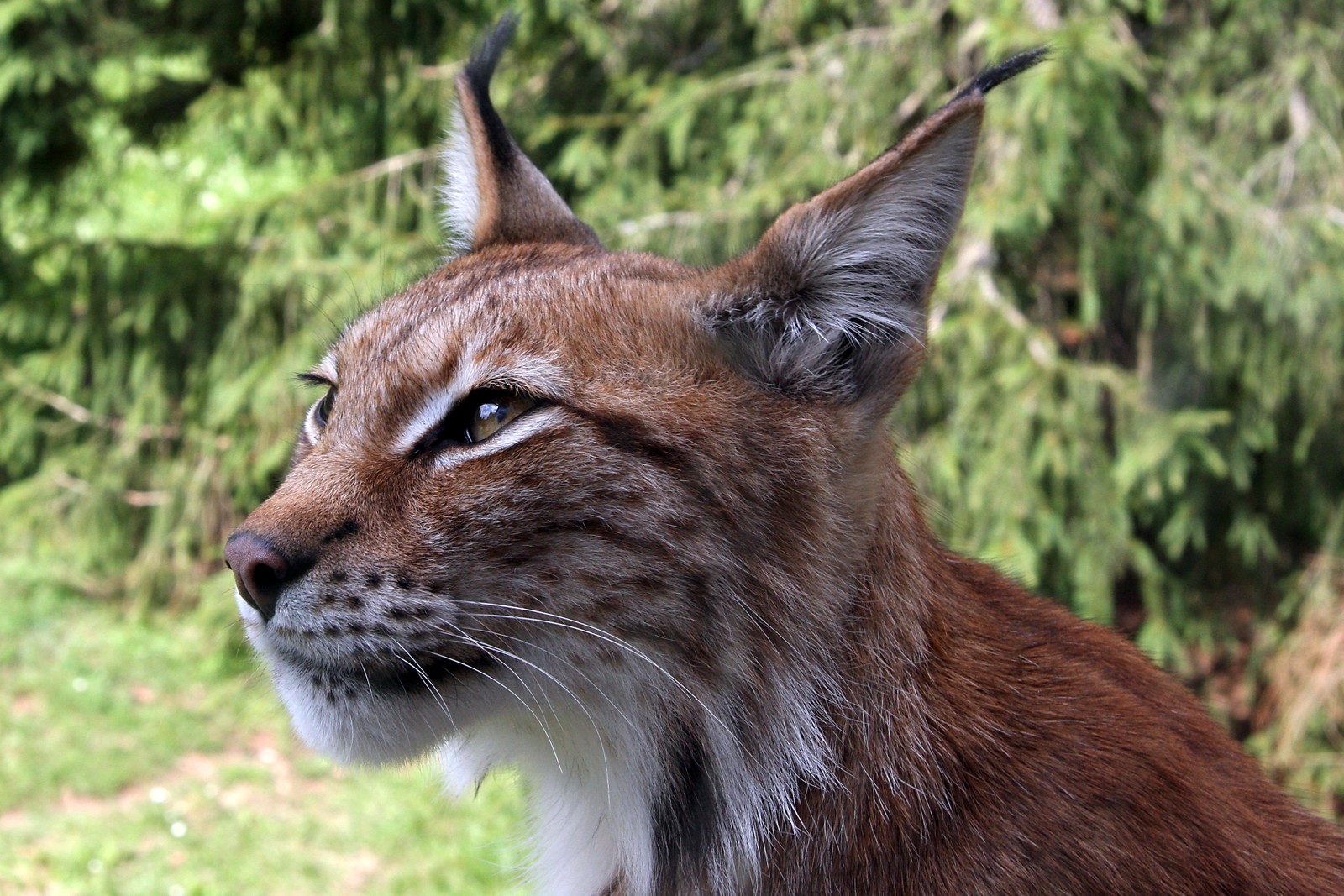
The Eurasian lynx exhibits the characteristic facial ruff and shorter ear tufts typical of northern lynx species. Its thick fur and robust build reflect its adaptation to colder climates and forest hunting.
Key Physical and Behavioral Differences
| Feature | Caracal | Lynx |
|---|---|---|
| Weight | 25-40 lbs (11-18 kg) | 30-65 lbs (13-29 kg) |
| Habitat | Savanna and semi-desert | Boreal and temperate forests |
| Ear Tufts | Long black tufts (1.75 inches) | Shorter black tufts (1 inch) |
| Coat | Short, uniform reddish-brown | Long, spotted or striped, varies seasonally |
| Hunting Style | Aerial jumps, bird specialist | Ground stalking, focuses on hares/deer |
| Distribution | Africa and parts of Asia | Northern Europe, Asia, and North America |
Habitat and Distribution
The caracal has adapted to life in arid environments, ranging from semi-deserts to savannas across Africa and parts of Asia. These cats thrive in temperatures reaching 100°F (38°C), utilizing their efficient cooling system and minimal water requirements.
In contrast, the lynx population spans the northern hemisphere’s boreal forests, where temperatures can plummet to -40°F (-40°C). Their large, furry paws act like natural snowshoes, allowing efficient movement through deep snow while hunting.
Hunting Techniques and Prey
Caracals have earned their reputation as nature’s most impressive aerial hunters. Their extraordinary jumping ability allows them to snatch birds mid-flight, sometimes catching multiple prey in a single leap. Their diet consists primarily of birds, rodents, and small antelopes.
Lynx employ a different hunting strategy, relying on stealth and power. They specialize in hunting snowshoe hares and deer, using their exceptional hearing and vision to track prey through dense forest undergrowth. Their larger size enables them to take down prey up to four times their own weight.
Conservation Status and Threats
Both species face mounting challenges from habitat loss and human conflict. The caracal shows remarkable adaptability to human-modified landscapes but faces persecution from farmers protecting livestock. Lynx populations have experienced significant declines across their range, with some subspecies listed as endangered.
Who Would Win in a Confrontation?
While such encounters would never occur naturally due to different geographical ranges, a theoretical analysis based on physical attributes suggests the Eurasian lynx would likely dominate in a direct confrontation. Its larger size (up to 65 pounds versus the caracal’s maximum of 40 pounds), more powerful build, and experience hunting larger prey give it a significant advantage. However, both cats typically avoid confrontation, preferring to maintain separate territories in their natural habitats.
Evolutionary Adaptations
These cats showcase remarkable examples of convergent evolution, developing similar features (like ear tufts) despite evolving in different environments. The caracal’s lightweight frame and exceptional agility evolved for hunting in open spaces, while the lynx’s robust build and insulating fur adapted to cold-weather hunting in forests.
Both species stand as testament to nature’s ability to craft perfectly adapted predators for their specific environmental niches, demonstrating how similar starting points can lead to distinctly specialized hunters.

